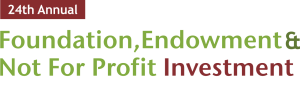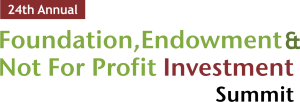Investing in alternative assets, such as private debt, is becoming more prevalent due to the volatility in today’s equity markets. The Alternative Investment Management Association (AIMA) projects that private debt will double in size to more than $1.4 trillion by 2023. This makes it one of the fastest-growing asset classes outside of private equity. Private equity attracts a lot of capital, but private debt is attracting capital at a faster rate. Now, where do you begin if you’re interested in investing in private debt? Here’s a deep dive into its benefits and challenges, investment strategies and so much more with Ninepoint’s Ramesh Kashyap. Ramesh is the Managing Director of the Alternative Income Group at Ninepoint Partners. Ramesh is also presenting a case study on private debt at the Foundation, Endowment and Not-for-Profit Investment Summit hosted on October 13–14.
What is Private Debt?
The term private debt typically describes debt investments that are not financed by banks and aren’t traded in an open market. Private debt investments are direct loans negotiated between an investor/lender and a company/borrower. Non-bank, commercial finance companies provide the capital. The word private refers to the investment instrument itself. Public companies can borrow via private debt just like private companies can.
“There's a lot of big companies throughout the world that borrow using non-bank, commercial finance companies that provide the private debt.” –Ramesh Kashyap, Managing Director, Alternative Income Group, Ninepoint Partners

Why Invest in Private Debt?
Private debt puts an emphasis on capital preservation and income generation. It is an attractive alternative to increase risk-adjusted returns and diversify your portfolio while generating a reliable income stream.
- Little to no correlation to public investments: Ramesh explained that you don't want your investments in alternative asset classes to move in the same direction as your public equities or public fixed income.
- Senior secured loans (usually secured against borrowers’ assets): Highest safety in the capital structure and a senior lien on assets. This means that if you have to liquidate assets, you are the first in line for payout.
- Attractive yield profiles: Senior secured direct loans are typically the most secure with a high level of safety and lower volatility than junior debt, mezzanine or equity. Private debt usually has targeted net returns in the 6-12% range (at individual investment level).
- Attractive absolute returns: Historically strong performance in various economic environments.
- Interest rate hedge: Structured as fixed rates in the low to mid-teens to hedge against rising interest rates or a floating rate over LIBOR (with a floor). The floating rate is a great hedge against interest rate changes because if the interest rate goes up it doesn’t have an effect on the investor’s return (only the cost for the borrower increases).
- Lower defaults/higher recoveries: Attractive risk-adjusted returns in middle market loans. The recovery of private debt is more than 80%. On the asset based lending side of private debt, it is closer to 95% or more.
- Current income: Returns are predominantly based on contractual coupon and fees to mitigate any J-curve.

Private Debt Strategies
- Cashflow Based Lending (or Enterprise Value Lending):
- Loan amount is based on the cashflow generated by the borrower
- Analysis conducted of financial statements, revenue, earnings, profitability, etc.
- Duration can range from six months to 48+ months
- Asset Based Lending:
- Loan amount is based on the physical assets pledged as collateral
- Analysis conducted on assets, such as accounts receivables, inventory, machinery and equipment, real estate, intellectual property, etc.
- How much to lend against the assets is determined by the premise that if the company has to be liquidated, how much money are the assets worth
- Duration can range from six months to 48+ months
- Trade Finance:
- A form of asset based lending (often lend or factor against an account receivable)
- Short-term loans to help facilitate trades and transactions (usually for trade deals between countries or with small to medium sized enterprises when they need short-term capital)
- Focused on counterparty risk and collateral
- Duration can range from 30 to 90+ days
The Challenges of Private Debt
- Lack of liquidity: If you provide private debt financing to a company, you don't have the freedom to call back that loan whenever you want. The company is already using the money, and you're committed to the capital. As long as they're performing and paying you back, you can’t reclaim the loan.
- Transparency: Because private companies are usually providing the capital, they're cautious about sharing information due to the fear that competitors might use it or confidentiality issues. However, as the number of institutions investing in private debt increases, so does the demand for more transparency.
“If you look at what you were able to access 10 years ago compared to today, private debt has come a really long way in terms of transparency.” -Ramesh Kashyap, Managing Director, Alternative Income Group, Ninepoint Partners
- Limited information available on track record of the asset classes
- Lack of comparability with other asset classes in private and public markets
- Non-linear deal flow resulting in cash drag

Adding Private Debt to Your Portfolio
Adding private debt to your portfolio can provide better risk-adjusted returns. In order to reap the value of adding private debt to your portfolio, it is generally recommended to invest anywhere from 5-25%. But to really get the full value, Ramesh said you should invest somewhere between 10-20% (depending on the size of your portfolio and what you want to accomplish). The Canada Pension Plan Investment Board (CPPIB) is a prime example of alternative investing done right.
“I realized Canadian pension funds are the Cadillac of pension funds around the world. They are looked upon with a lot of respect because they thought of investing in alternative assets early on in the mid-2000s before the GFC.” -Ramesh Kashyap, Managing Director, Alternative Income Group, Ninepoint Partners

Ramesh stressed the importance of due diligence and oversight when investing in private debt. Comprehensive due diligence to originate, evaluate, structure and independent oversight are fundamental pillars of alternative investment strategies. Don't just look at return or liquidity, also take concentration, risk, style drift and governance into account. Not all private debt funds are equal. Not all funds have the governance and the infrastructure that you need or the requirements that you’re looking for.
The Future of Private Debt
Private debt performance has normalized, but COIVD-19 risks remain.
- U.S. private debt performance continues to trend towards pre-COVID levels.
- Realized losses are typically a lagging indicator — data suggests COVID-19 induced losses may be behind us.
- Default rates continue to decline as loans return to performing — amendments and extensions may have masked deeper borrower issues.
- If economic recovery deviates from expectations, Ninepoint believes these issues will resurface leading to portfolio issues.
- If economies do not recover as anticipated due to COVID-19 variants, senior loans are expected to outperform as portfolio issues may arise.
“[Private debt] actually was one of the more robust asset classes through COVID-19. So, if you're worried about the fourth wave and any other uncertainty that is coming in the world, it's a good asset class to be in.” -Ramesh Kashyap, Managing Director, Alternative Income Group, Ninepoint Partners
Ramesh said that Canada is at least five years behind the United States from a private debt perspective. In terms of both investor acceptance and the number of companies using private debt. In the U.S., banks are losing a lot of market share to private debt providers (when it comes to commercial finance). It's beginning to happen in Canada, but the evolution is still lagging in comparison to the United States. The CPPIB invested in private debt early on, but smaller institutions are slower to adapt. Ramesh believes that in five to 10 years, the level of private debt in Canada will either be double or triple what it is today.


